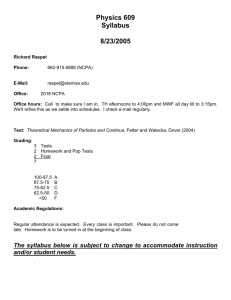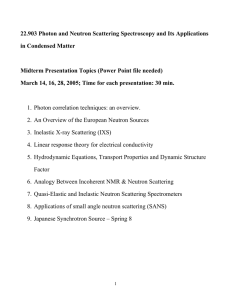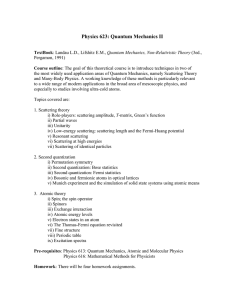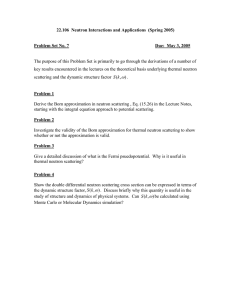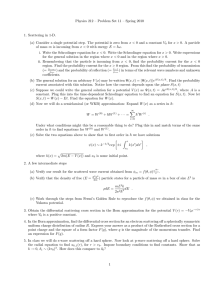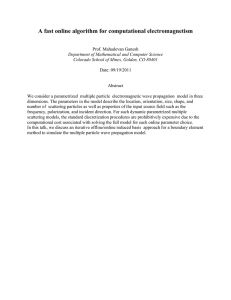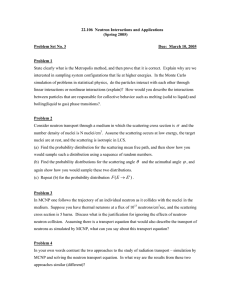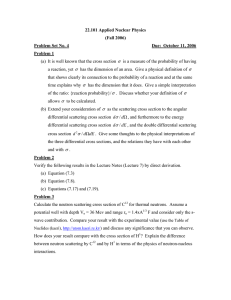22.54 Neutron Interactions and Applications (Spring 2004) Problem 1
advertisement
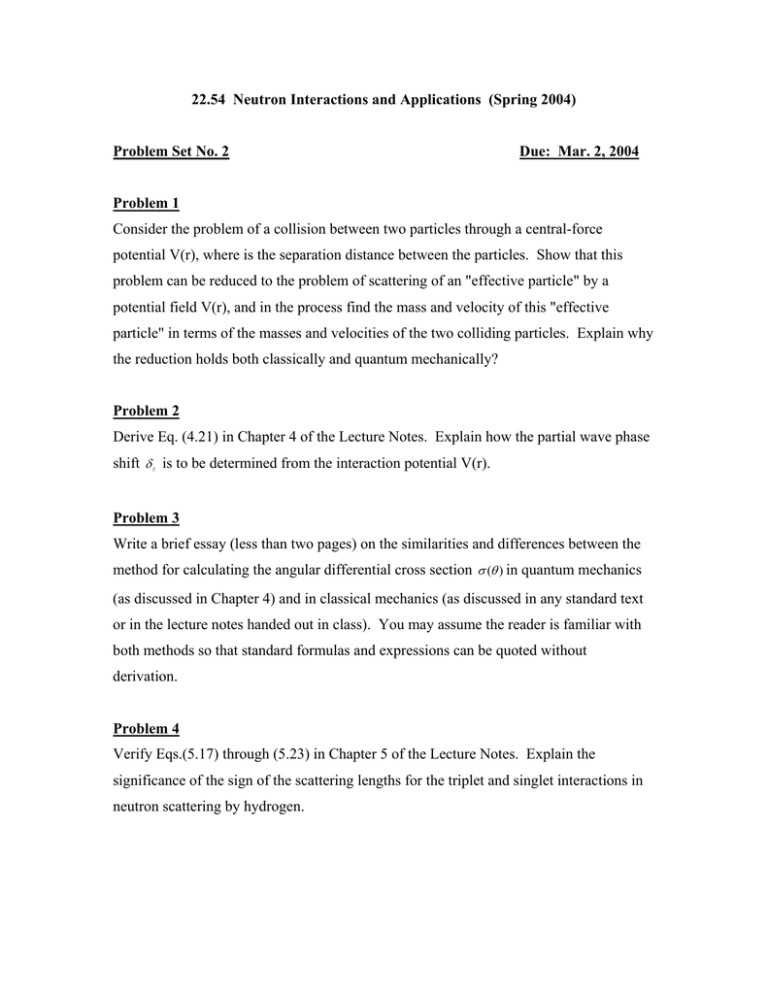
22.54 Neutron Interactions and Applications (Spring 2004) Problem Set No. 2 Due: Mar. 2, 2004 Problem 1 Consider the problem of a collision between two particles through a central-force potential V(r), where is the separation distance between the particles. Show that this problem can be reduced to the problem of scattering of an "effective particle" by a potential field V(r), and in the process find the mass and velocity of this "effective particle" in terms of the masses and velocities of the two colliding particles. Explain why the reduction holds both classically and quantum mechanically? Problem 2 Derive Eq. (4.21) in Chapter 4 of the Lecture Notes. Explain how the partial wave phase shift δ A is to be determined from the interaction potential V(r). Problem 3 Write a brief essay (less than two pages) on the similarities and differences between the method for calculating the angular differential cross section σ (θ ) in quantum mechanics (as discussed in Chapter 4) and in classical mechanics (as discussed in any standard text or in the lecture notes handed out in class). You may assume the reader is familiar with both methods so that standard formulas and expressions can be quoted without derivation. Problem 4 Verify Eqs.(5.17) through (5.23) in Chapter 5 of the Lecture Notes. Explain the significance of the sign of the scattering lengths for the triplet and singlet interactions in neutron scattering by hydrogen.


